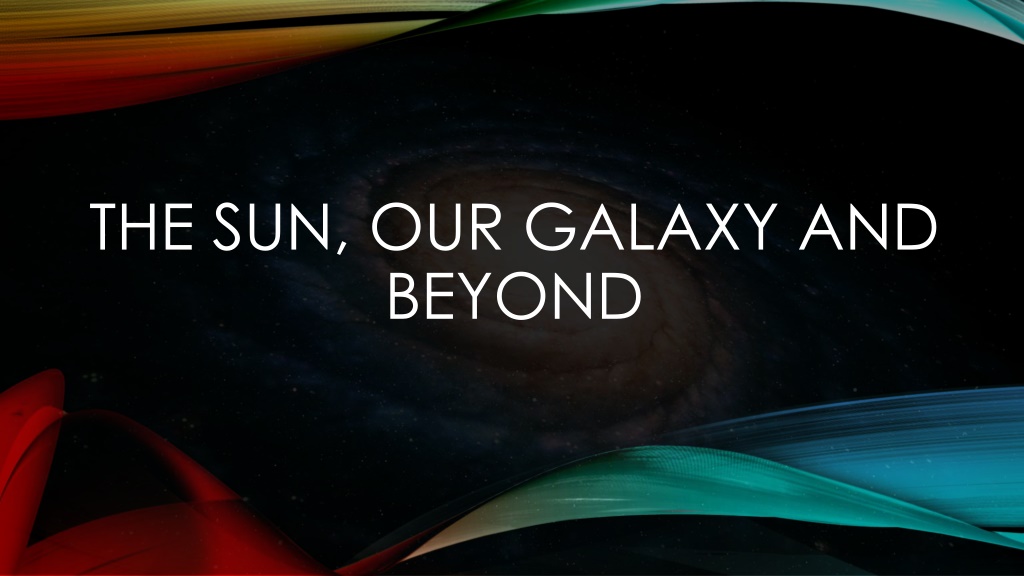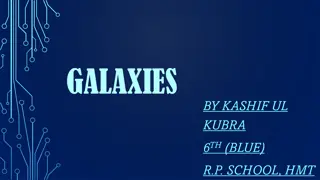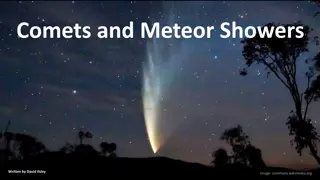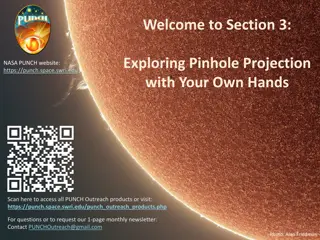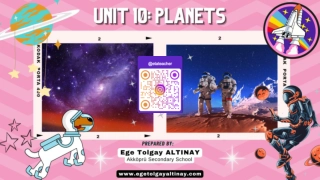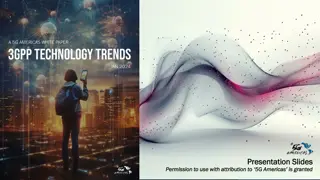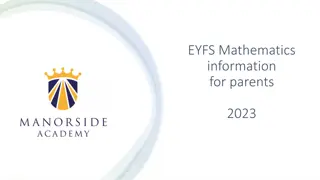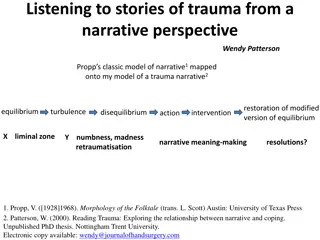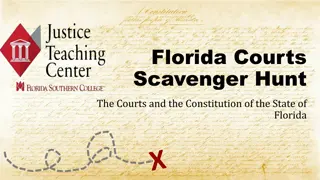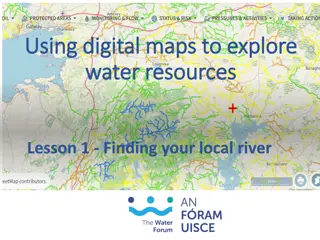Exploring Our Sun, Galaxy, and Beyond
Delve into the fascinating world of the sun, our galaxy, and the vast expanse of space. Learn about the sun being a star at the center of our solar system, the planets orbiting it, the diversity of stars in the universe, and the Milky Way galaxy that we call home. Discover Proxima Centauri, our closest stellar neighbor, and ponder the sheer magnitude of stars in the Milky Way. Uncover the concept of galaxies as massive groups of stars bound together by gravity, each with its unique shape. Embark on a journey through space, marveling at the wonders that lie beyond our planet.
Download Presentation
Please find below an Image/Link to download the presentation.
The content on the website is provided AS IS for your information and personal use only. It may not be sold, licensed, or shared on other websites without obtaining consent from the author. Download presentation by click this link. If you encounter any issues during the download, it is possible that the publisher has removed the file from their server.
Presentation Transcript
THE SUN, OUR GALAXY AND BEYOND
THE SUN IS A STAR FOUND AT THE CENTRE OF OUR SOLAR SYSTEM
Lets remember the 8 planets which orbit the sun and form our solar system: Mercury Venus Earth Mars Jupiter Saturn Uranus Neptune Remember! My Very Elegant Mother Just Served Us Noodles
Our sun is not the only star in space
Some stars are enormous compared to our sun. Some stars are much older and some are much younger than our sun and the distances between them are huge.
Shining brightly in this Hubble space telescope image is our closest stellar neighbour: Proxima Centauri. It is about four light- years away from Earth. Although it looks bright through the eye of Hubble, Proxima Centauri is not visible to the naked eye. Although by cosmic standards it is a close neighbour, Proxima Centauri remains a point-like object even using Hubble s eagle-eyed vision, hinting at the vast scale of the Universe around us. By ESA/Hubble, CC BY 4.0, https://commons.wikimedia.org/w/index.php?curid=29263039
SCIENTISTS ESTIMATE THAT THERE ARE BETWEEN 100 BILLION AND 400 BILLION STARS IN OUR MILKY WAY GALAXY ALONE.
WHAT IS A GALAXY? A galaxy is a massive group of stars, gas, dust, and other matter. All of these are bound together by gravity.
DIFFERENT SHAPES Not all galaxies are the same. They come in 3 different shapes.
THE MILKY WAY GALAXY The galaxy we live in is called the Milky Way Galaxy. It was formed about 12 million years ago. It is spiral in shape. Our sun, the moon, Earth and all the other planets we know of, are part of the Milky Way galaxy. In our galaxy there are many other suns, moons and planets which we still don t know about.
HOW LARGE IS OUR MILKY WAY GALAXY? It is thought that there could be up to 400 billion stars in the Milky Way Galaxy. That s 400,000,000,000!
SO WHAT IS A LIGHT YEAR? URL for above video: https://www.youtube.com/watch?v=MX3PIkbTQwQ
THIS VIEW OF ALMOST 10,000 GALAXIES WAS TAKEN WITH THE NASA/ESA HUBBLE SPACE TELESCOPE. IT ONLY COVERS ONE TWENTY-SIX MILLIONTH OF THE TOTAL AREA OF THE SKY.
WHAT IS ONE TWENTY-SIX MILLIONTH OF THE TOTAL AREA OF THE SKY? URL for above video: https://www.youtube.com/watch?v=99uWHUQ-dC0
JAMES WEBB SPACE TELESCOPE Launched on December 2021, it s the most powerful telescope ever to be launched Here is a comparison images taken and the JWST. It will help us look deeper into space than ever before. the 25th into space. of by Hubble
ANDROMEDA GALAXY It is the closest major galaxy to the Milky Way. It is about 220,000 light years wide and about 2.5 million light years away from us.
ULTRAVIOLET IMAGE OF ANDROMEDA SHOWS BLUE REGIONS CONTAINING YOUNG, MASSIVE STARS
HOW BIG IS OUR UNIVERSE? COULD THERE BE OTHER UNIVERSES? URL for above video: https://www.youtube.com/watch?v=GoW8Tf7hTGA
GALAXY IN A JAR Make your own galaxy in a jar, follow the instructions on the next page.
